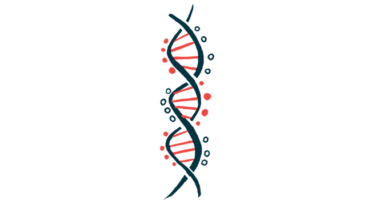Insights into transthyretin structure may offer new FAP treatments
Researchers froze proteins to graphene-coated grids to look at its structure

Researchers have uncovered previously unknown structural features of transthyretin, the protein that’s faulty in familial amyloid polyneuropathy (FAP), which could pave the way toward new treatment strategies.
“We’ve unveiled a molecular complexity that has been hidden from researchers for decades, which enables us to design better medicines to stabilize transthyretin,” Gabriel Lander, PhD, the study’s co-senior author and a professor at Scripps Research, said in an institute press release.
The study, “The conformational landscape of human transthyretin revealed by cryo-EM,” was published in Nature Structural and Molecular Biology.
FAP is a genetic disorder caused by mutations in the gene that provides instructions to make transthyretin, which normally helps transport certain molecules, such as the thyroid hormone, through the bloodstream. Transthyretin normally exists as a tetramer, that is, four individual proteins that bind together to form a single, functional unit. In FAP, the transthyretin tetramer is unstable and tends to fall apart into individual proteins. On their own, the individual proteins tend to clump together, ultimately leading to toxic aggregates being formed mainly accumulate in the nerves outside the brain and spinal cord and that cause damage to tissues.
Transthyretin’s tetramer structure has been vital for developing treatments for FAP and transthyretin amyloid cardiomyopathy (ATTR-CM), a FAP-related disease where toxic transthyretin clumps mainly build up in the heart. For example, tafamidis meglumine, an orally available small molecule, works by binding to the tetramer and stabilizing it, helping to prevent its disassembly and the formation of toxic aggregates of individual transthyretin proteins.
Tafamidis meglumine is approved for FAP in Europe under the brand name Vyndaqel, but it isn’t approved in the U.S. A newer formulation, sold as Vyndamax, is approved for ATTR-CM in the U.S. and Europe, however.
Learning more about transthyretin protein in FAP
Here, researchers at Scripps Research used an advanced imaging technique where they froze transthyretin proteins bound to graphene-coated grids to evaluate its normal structure in more detail.
“We built on the 2019 work from the Yan lab at Princeton when making our grids. Getting the surface chemistry right is crucial for this type of study,” said Benjamin Basanta, PhD, a former researcher in Lander’s lab and the study’s first author. “With small proteins like transthyretin, creating a high-quality sample is just the beginning; analyzing the data is also part of the challenge.”
It’s long been known that a transthyretin tetramer has two binding sites, or regions where the tetramer can bind to molecular cargo such as the thyroid hormone. It’s been assumed that these two sites are functionally identical and that treatments like tafamidis can stabilize the tetramer by binding to either one.
However, the ability of the thyroid hormone, tafamidis, and other small molecules to bind to the tetramer is stronger for a first binding event than for a second binding event, suggesting that binding to one of the regions suppresses the ability of molecules to bind to the other one.
The new study shows the transthyretin tetramer actually forms asymmetric structures and that the two binding sites have slightly different shapes.
The tetramer was also found to be constantly changing between two different states or structures. Occupying only one of the binding sites still allowed the tetramer to change to a state that’s more prone to disassembly and the formation of toxic clumps, while having both binding sites occupied prevented this state.
“The new structures reveal differences in two thyroid hormone binding sites previously thought to be identical and help explain why a drug binding to one site changes the ability of drugs to bind the opposing site,” said Jeffery Kelly, PhD, the study’s co-senior author, a professor at Scripps Research, and one of the researchers involved in creating tafamidis.
This discovery could have important implications for creating new treatments for FAP and other transthyretin-mediated diseases. In theory, it could be possible to better stabilize the transthyretin tetramer by using two different drugs, each tailored to bind to only one of the two binding sites — for example, using tafamidis with another drug that binds to the other site.
“A second small-molecule … stabilizer designed to interact preferentially with the second … binding site … when used in combination with tafamidis could, in principle, afford better … stabilization of [transthyretin] tetramers,” the researchers wrote.







